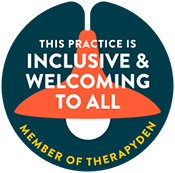ANXIETY
Feeling anxious is a normal human emotion, but when experienced at a high rate over a consistent time period, it can become disruptive, debilitating, and overwhelming.
Anxiety Disorder is a broad term that encompasses a few more specific disorders:
Generalized Anxiety Disorder - you experience excessive and unrealistic worry with little or no reason. While it can feel less severe than panic, this type of anxiety is typically drawn out over a long period of time.
Social Anxiety Disorder - overwhelming worry and self consciousness regarding everyday social situations; a fixation on others judging you or feeling embarrassed.
Panic Disorder - a feeling or dread / terror that at times can feel as though it is randomly surfacing, chest pain, sweating, heart palpitations, choking sensation, and shortness of breath are some of the symptoms people often experience during an attack.
Specific Phobias - an intense fear of a specific object or situation; this fear goes beyond what is normal and may cause you to avoid situations that are routine or general.
Anxiety, panic attacks, phobias can all feel as though they rule your life, however, they are very treatable and among the most common disorders I see in my practice. I am committed to helping individuals navigate the stormy waters of anxiety to find a place of stillness and calm.
DEPRESSION
Depression is a mood disorder that while common can also be very serious. It can cause significant symptoms that influence how you think, act, and feel. Symptoms are typically present for at least two weeks and oftentimes more. In some cases the symptoms are considered chronic.
The most common symptoms are, sad mood and loss of interest in life. Physical symptoms might include, excessive sleep, fatigue, persistent aches, pains, digestive issues, changes in weight/diet. While it is normal to feel down now and then, if it is affecting your daily life it might be time to seek out support!
There are several types of depression (not all listed/discussed here):
Major Depressive Disorder - feeling depressed most of the time (most days of the week) for at least two weeks or more.
Persistent Depressive Disorder - depressive symptoms for two years or longer.
Postpartum Depression - depressive symptoms that typically surface in the weeks and months following childbirth.
Bi Polar Depression - somebody with Bi Polar Disorder who is experiencing a low or a depressive period with the symptoms of major depressive disorder.
Psychotic Depression - symptoms of major depression and psychotic symptoms.
Premenstural Dysphoric Disorder - symptoms of depression at the beginning of menstrual cycle - may also have anxiety, mood swings, and/or feel overwhelmed.
Seasonal Affective Disorder - see below.
Depression is often misunderstood by society adding to the existing feelings of loneliness and isolation. I have been working with individuals battling depression for many years and I never cease to be amazed by the dedication, perseverance, and resiliency of the human spirit to bring itself from a dark place to one full of love and light. I remain passionate about supporting individuals on this journey.
SEASONAL AFFECTIVE DISORDER
Seasonal Affective Disorder - is a period of major depression that most often occurs during the winter months when the days are shorter and there is less and less sunlight.
Here in the Seattle area people begin experiencing SAD in the fall and winter months and it can continue even into spring as it does not often become sunny again until the summer months around here. Most people who experience SAD have mild to moderate symptoms such as:
Oversleeping
Weight gain
Social Avoidance and withdrawl
Lack of interest in activities / hobbies
Hopelessness
Depression
Fatigue
A popular treatment for SAD is light therapy. However, if your symptoms are not improving and/or disruptive in your daily life it is a good time to check with a therapist!
